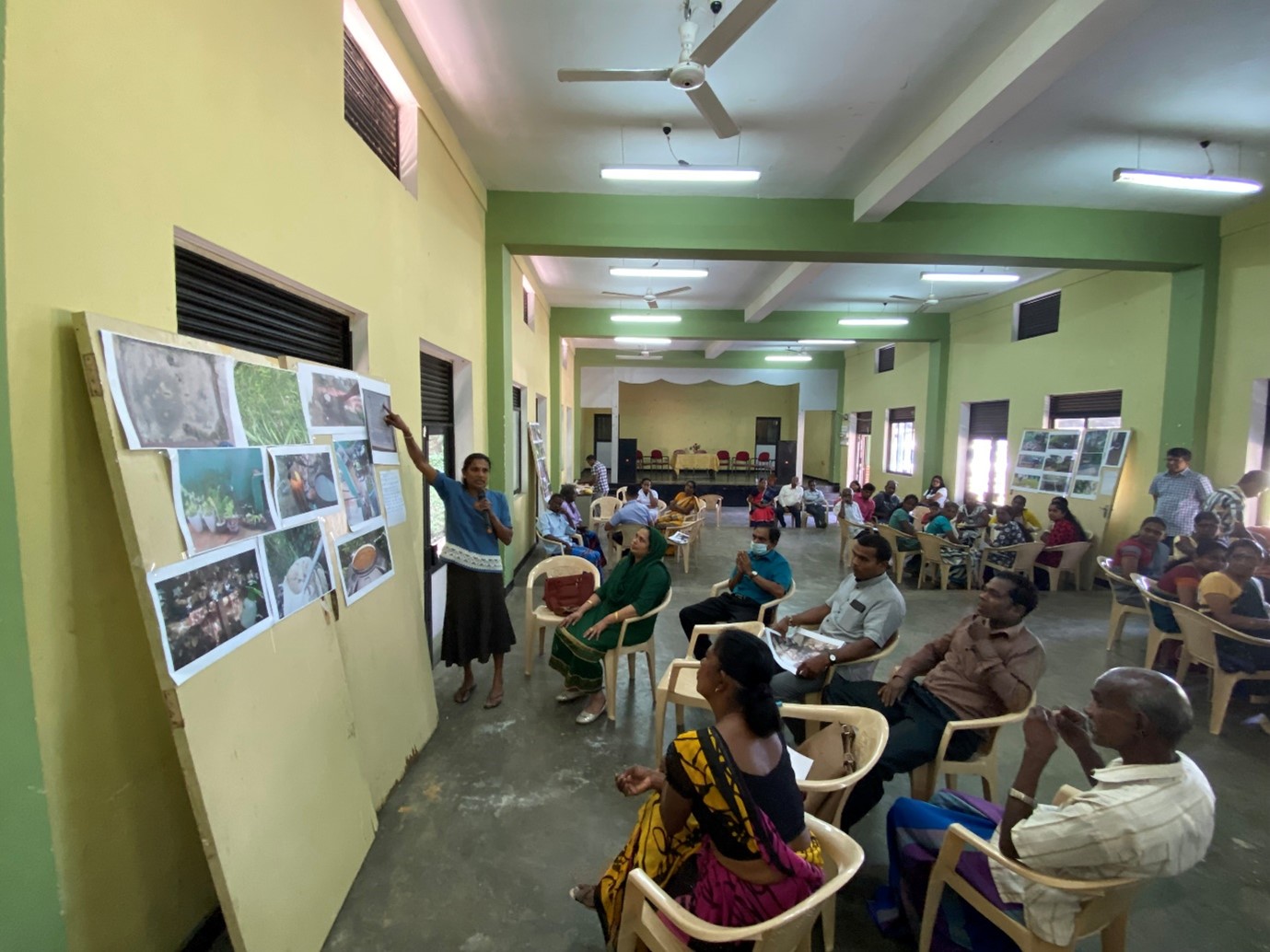Photovoice workshops for the ongoing Inclusive Urban Infrastructure project, with community members and agents (those who engage in provisioning of infrastructure), were recently held in Sarnia Estate (Badulla) and Nawagampura (Colombo).
Photovoice is a visual research methodology where participants use photographs to capture, record, consider and express themes that are important to them. It is a way to obtain information about lived experiences for research purposes. This participatory technique one-on-one or group discussions centered around selected photographs as a tool for marginalised people to share their understandings, feelings and ideas in relation to social concerns.
The goal is to enhance community involvement in decision-making, raise awareness of available community resources, strengthen understanding in relation to potential interventions and promote social change. Participants in the two sites had taken quality pictures, using their smartphones, that best represented their lived experiences and the reality of their community. These photos communicated key issues within their communities. The focus was on water in Sarnia and on housing in Nawagampura. Participants were selected from the pool of key informants for the Systems of Provision approach. They were guided to take photos linking our key concepts with the SHOWED technique.
Each participant was given a period of six to seven days to take 10 photos, selecting three that they found particularly meaningful. A compilation of each respondent’s selected three photos were used in a workshop where residents, community leaders, service providers and local government officials were present. Purposive groups representing teams concerned with three problem areas and one team with a success story were formed in Sarnia to reflect on access to water. In Nawagampura, renters, owners, and encroachers (persons who have occupied land unlawfully) formed similar groups. Creating these groups enabled deeper insights and reflections on key issues pertaining to social, economic, political and cultural dynamics.
Key findings in Sarnia revealed the necessity of clean and protected water sources, along with attention to water quality (which currently causes negative health effects for residents). A preferred model is where the water supply is regulated by fixing individual meters and maintenance is done by residents (who had formed a committee for this purpose). Key issues pertaining to housing in Nawagampura were health and sanitation concerns with existing drainage systems, flooding of an adjoining canal, waste management, overcrowding resulting in social problems and land ownership.
The results from Photovoice were fed into the model intervention being planned and are to be further shared through possible photo exhibitions to encourage public discussions, policy changes and social transformation. The SEVANATHA Urban Resource Centre (the non-academic local partner for the project) will implement the model intervention in one of our research sites. The Photovoice research method in Sarnia and Nawagampura was led by Dr. Shashini Gamage (Research Associate, University of Melbourne), together with members of the Centre for Migration Research and Development in Sri Lanka.
